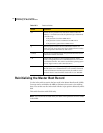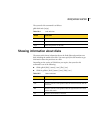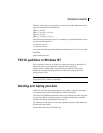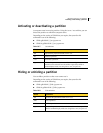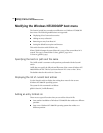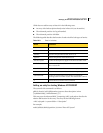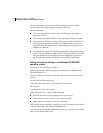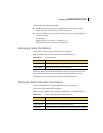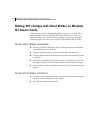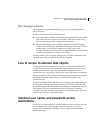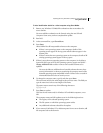
140 Managing partitions using GDisk
Modifying the Windows NT/2000/XP boot menu
For more information, see the Microsoft Knowledge Base article Q102873 -
“BOOT.INI and ARC Path Naming Conventions and Usage.”
Note the following:
■ GDisk uses only MULTI(X) syntax when describing ARC style paths, as
opposed to SCSI(X).
■ GDisk always uses multi(0)disk(0) as the beginning of the ARC style path.
■ /winnt instructs GDisk32 to create an ARC style entry and must be used if
the target operating system is Windows NT/2000/XP. If this switch is not
used, then GDisk32 creates an entry as if the target operating system is not
Windows NT/2000/XP.
■ /sysfolder lets you specify the Windows system folder on the target operating
system. The system folder is usually Winnt. If the system folder is not Winnt,
then provide the path to this folder, but do not include the root directory.
For example, use /sysfolder:"2k\WinNt", not /sysfolder:"f:\2k\WinNt".
Adding an entry for starting a non-Windows NT/2000/XP
operating system
The syntax for this command is as follows:
gdisk32 /bootini /add /d:diskno/p:partno /desc:description [/inifile:filename]
[/bsectfile:filename] [/r]
This entry to Boot.ini references a boot sector file used to continue the boot up
process.
The entry has the following format:
<full path to boot sector file>\<boot sector file>="description"
For example:
C:\bootos2s.dat="Boot OS/2 System"
When adding this entry, GDisk does the following:
■ Reads the first sector of the targeted partition (boot sector).
■ Writes out the contents of that sector to a boot sector file.
■ Adds a reference to that boot sector file to Boot.ini.
The /bsectfile switch is optional. It is used if you want the created bootsect.dat file
to be saved somewhere other than the default location.
You must specify the full path and file name for the boot sector file that is created
when you use the /bsectfile switch.



